
-
Find the right food for your petTake this quiz to see which food may be the best for your furry friend.Find the right food for your petTake this quiz to see which food may be the best for your furry friend.Featured products
 Small & Mini Mature Adult 7+ Dog Food
Small & Mini Mature Adult 7+ Dog FoodHill's Science Plan Small & Mini Breed Mature Adult Dog Food with Chicken is a complete pet food, specially formulated with ActivBiome+ Multi-Benefit Technology.
Tailored nutrition to support graceful ageing in small dogs. Specially made with a synergistic blend of nutrients for energy & vigor.Shop Now Perfect Digestion Large Breed Puppy Food
Perfect Digestion Large Breed Puppy FoodPrecisely balanced nutrition with Hill's ActivBiome+ prebiotic blend actively contributes to supporting digestive health and overall well-being to help your pet feel their best
Shop Now Perfect Digestion Small & Mini Adult Dog Food
Perfect Digestion Small & Mini Adult Dog FoodHill's Science Plan Perfect Digestion Small & Mini Breed Adult Dog Food with Chicken & Brown Rice supports ultimate digestive well-being & a healthy microbiome.
Shop NowFeatured products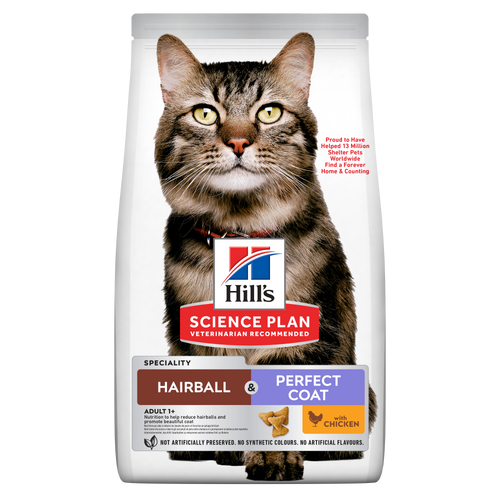 Hairball & Perfect Coat Adult Cat Food
Hairball & Perfect Coat Adult Cat FoodHill's Science Plan HAIRBALL & PERFECT COAT Adult cat food with Chicken is specially formulated to effectively help avoid hairball formation in adult cats while promoting a beautiful coat. Thanks to its mix of essential Omega-6 fatty acids, this food benefits the cat's skin and fur keeping them healthy and shiny. Our Advanced Fibre Technology helps reduce hairballs by naturally promoting their passage through the gut. This food is formulated with high-quality protein for a perfectly balanced, great-tasting recipe.
Shop Now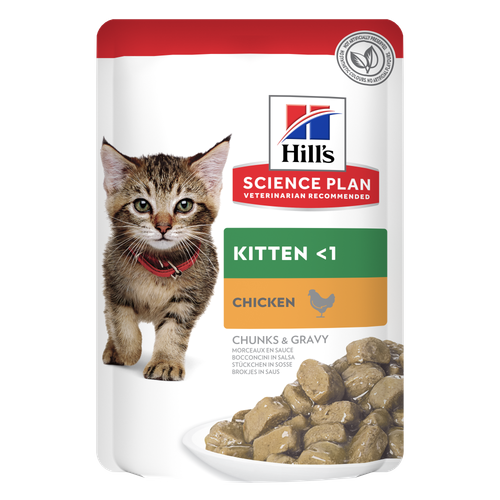 Kitten Food
Kitten FoodTender chicken chunks in gravy for kittens, with omega-3s for healthy eye & brain development and high-quality protein to support muscle growth. With balanced minerals to promote strong bones & teeth.
Shop Now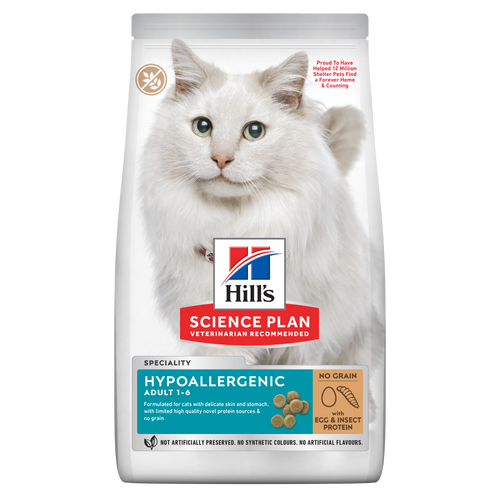 Hypoallergenic Dry Cat Food
Hypoallergenic Dry Cat FoodHILL'S SCIENCE PLAN Hypoallergenic Adult cat food with egg & insect protein is a complete pet food for adult cat 1–6 years old. It's formulated for cats with delicate skin and stomach, with limited high quality novel protein sources & no grain.
Shop Now -
Dog
- Dog Tips & Articles
-
Health Category
- Weight
- Food & Environmental Sensitivities
- Urinary
- Digestive
- Joint
- Kidney
-
Life Stage
- Puppy Nutrition
- Adult Nutrition
- Senior Nutrition
Cat- Cat Tips & Articles
-
Health Category
- Weight
- Skin & Food Sensitivities
- Urinary
- Digestive
- Kidney
-
Life Stage
- Kitten Nutrition
- Adult Nutrition
Featured articles The Right Diet For Your Pet
The Right Diet For Your PetLearn what to look for in healthy pet food & nutrition, including ingredients, quality of the manufacturer, your pet's age, and any special needs they have
Read More Understanding Your Pet's Microbiome
Understanding Your Pet's MicrobiomeLearn what a pet's microbiome is, how it contributes to your pet's gut & overall health, and why nutrition is important in maintaining healthy microbiomes.
Read More Pet Food Storage Tips
Pet Food Storage TipsWhere you store your cat and dog food can make a big difference in the quality and freshness once it is opened. Here are some common questions and recommendations for optimal storage for all of Hill’s dry and canned cat and dog food.
Read More -


It can be easy to miss the signs your cat is sick; they don't all resemble the colds that people contract from time to time. Cats have a tendency to hide their pain, making it difficult to properly care for them when they need it the most. But if you know what to look for, you can recognise cat pain symptoms early and get your kitty the help she needs.
Why Cats Hide Their Pain
The tendency cats have to disguise their discomfort is believed to be an evolutionary holdover from their days in the wild, where illness or injury paints a target on their back to nearby predators. Not only would the appearance of weakness make a wild cat more vulnerable, but it would also put her in danger of being bullied or abandoned by her group.
Although today's domestic cats generally don't have to worry about becoming prey, they may view other pets in the house–or even other people–as competition for resources like food and water. Whether driven by a deeply ingrained instinct or by overprotective kitty logic, cats worry that showing signs of pain will cause them to lose out to a more deserving animal, encouraging them to mask their symptoms.
Common Cat Pain Symptoms
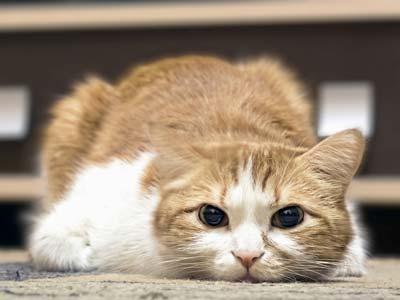 A cat experiencing pain will often display behavioral changes that can serve to tip off an astute pet parent to the fact that something's wrong. According to Vetstreet, common signs your cat is sick or in pain include:
A cat experiencing pain will often display behavioral changes that can serve to tip off an astute pet parent to the fact that something's wrong. According to Vetstreet, common signs your cat is sick or in pain include:
- Hiding
- Sitting still and hunched up
- Loss of interest in people, other pets, or activities
- Neglecting to groom themselves, or over-grooming in one spot
- Purring, excessive meowing, or unusual vocalizations
- Restlessness or aggression toward friendly surroundings
- Doing her business outside the litter box
Kitties in pain might also show a loss of appetite, unusual vomiting, clingy behavior, or other noticeable changes in personality and demeanor. A cat experiencing chronic pain, such as arthritis, might stop using the litter box altogether because it's too difficult to climb into. For this reason, she may also stop climbing or jumping onto the high perches of her cat tree.


Tasty Tips
How your Vet Can Help
 Any abnormal behavior from your cat should prompt a visit to her veterinarian, who can help determine whether these changes are due to pain or illness and then work with you to treat the underlying cause. The vet can also help with pain management–this might include prescription pain medication, heat therapy, physical rehabilitation, or even massage.
Any abnormal behavior from your cat should prompt a visit to her veterinarian, who can help determine whether these changes are due to pain or illness and then work with you to treat the underlying cause. The vet can also help with pain management–this might include prescription pain medication, heat therapy, physical rehabilitation, or even massage.
If your kitty is overweight, your vet might also place her on a weight-management food, especially if she's experiencing chronic joint pain. Certain joint supplements can help maintain her mobility too, but you may ultimately want to explore a therapeutic food to help manage an underlying condition.
One thing you should never do for your kitty is to administer over-the-counter pain medications, which could be very toxic to feline digestive systems. You should also check with your vet regarding any supplements you plan to give her to make sure they're safe. The vet might also prescribe mood-stabilizing drugs to help your sick cat cope with both the pain and accompanying changes in her lifestyle.
How You Can Help
Back at home, consider relocating her bed, food dishes, water bowls, and litter box so they're easier for her to get to. Make sure the litter box is simple enough to climb in and out of as well. If you have a model with a lid or deep sides, for instance, you might need to replace it with an open, shallower structure, and keep it scooped clean more frequently to accommodate for her disadvantage. Big family? Prevent other pets or children from trying to play or roughhouse with her. She may escape it herself, but you don't want her to lose trust in people while she's recovering.
Of course, the best medicine is preventive. Annual vet checkups and a well-balanced food will go a long way toward preventing your cat from developing a painful condition.
As a pet parent, you no doubt want your kitty to be healthy for her entire life. Learning to recognize when she's in pain will go a long way to improving your furry companion's quality of life.


Jean Marie Bauhaus is a pet parent, pet blogger, and novelist from Tulsa, Oklahoma, where she usually writes under the supervision of a lapful of fur babies.
Related products

HILL'S SCIENCE PLAN Hypoallergenic Adult cat food with egg & insect protein is a complete pet food for adult cat 1–6 years old. It's formulated for cats with delicate skin and stomach, with limited high quality novel protein sources & no grain.

Hill's Science Plan HAIRBALL & PERFECT COAT Adult cat food with Chicken is specially formulated to effectively help avoid hairball formation in adult cats while promoting a beautiful coat. Thanks to its mix of essential Omega-6 fatty acids, this food benefits the cat's skin and fur keeping them healthy and shiny. Our Advanced Fibre Technology helps reduce hairballs by naturally promoting their passage through the gut. This food is formulated with high-quality protein for a perfectly balanced, great-tasting recipe.

Tender chicken chunks in gravy for kittens, with omega-3s for healthy eye & brain development and high-quality protein to support muscle growth. With balanced minerals to promote strong bones & teeth.
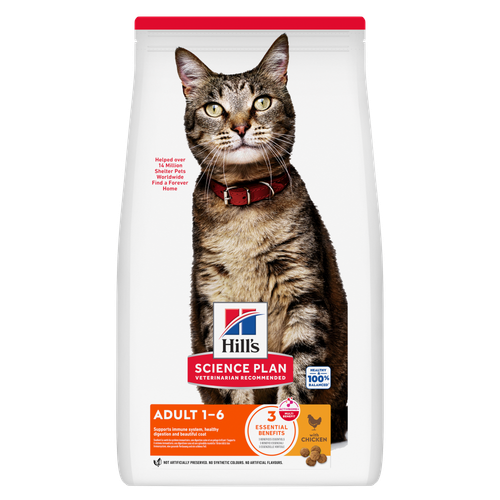
Hill's Science Plan Adult Cat Food with Chicken is a complete pet food, specially formulated with ActivBiome+ Multi-Benefit Technology.
This food is specially formulated to fuel the energy needs of cats during the prime of their life.
Related articles

When learning how to train your cat, you'll start with very basic first steps that both reward good behavior and discourage the bad.
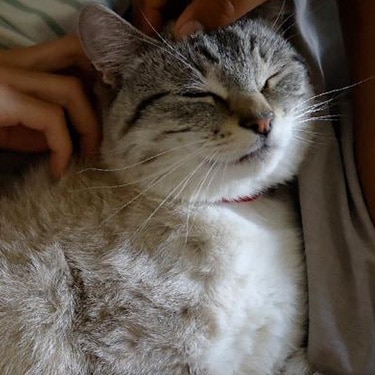
Find out about how you can support your cat's digestion to boost overall health. Diet is key to a long and happy life for your cat, so discover what you can do.

Discover which cat toys games your feline friend might like, and how they are great sources of exercise. Explore our library of articles to learn more.
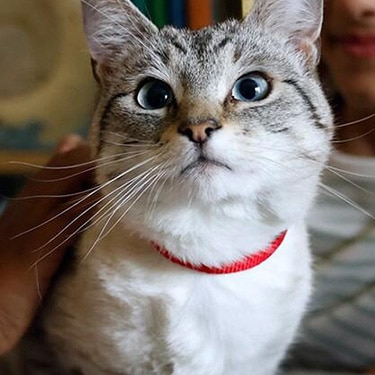
Discover what you can do to spot and support a sensitive cat stomach. See what routines and food you can implement to help your cat be happy and healthy.

Put your cat on a diet without them knowing
Our low calorie formula helps you control your cat's weight. It's packed with high-quality protein for building lean muscles, and made with purposeful ingredients for a flavorful, nutritious meal. Clinically proven antioxidants, Vitamin C+E, help promote a healthy immune system.
Put your cat on a diet without them knowing
Our low calorie formula helps you control your cat's weight. It's packed with high-quality protein for building lean muscles, and made with purposeful ingredients for a flavorful, nutritious meal. Clinically proven antioxidants, Vitamin C+E, help promote a healthy immune system.

